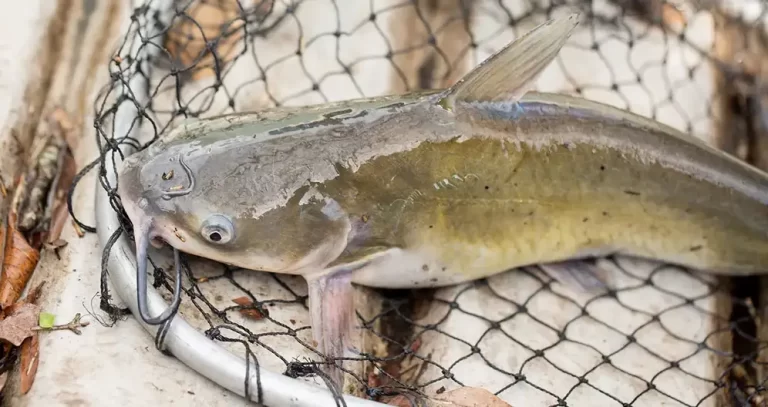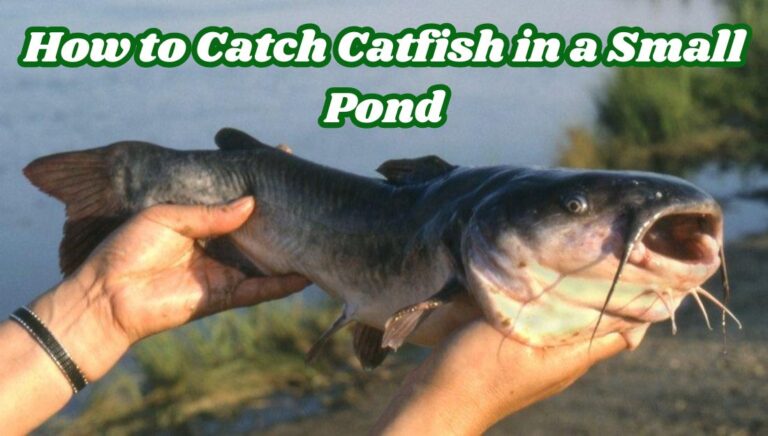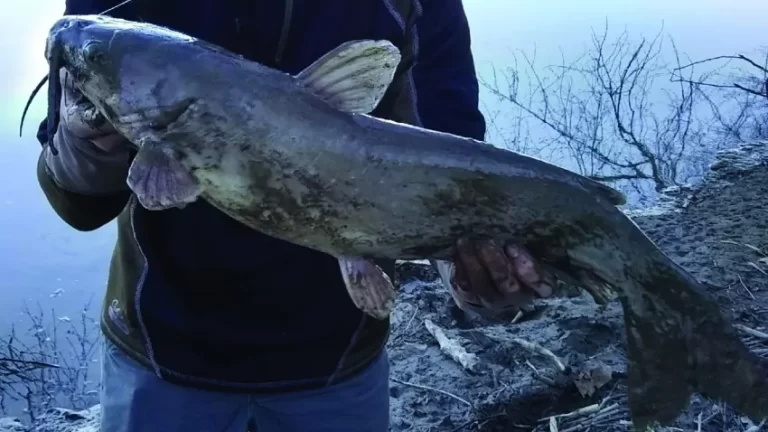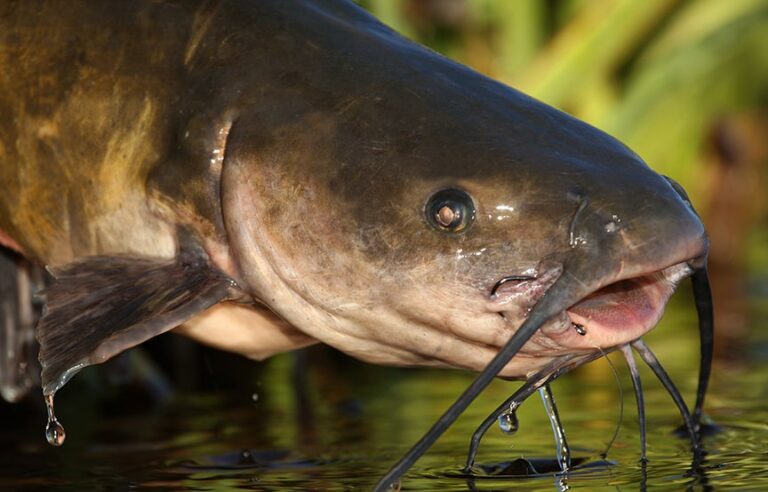How to Catch Catfish in Winter in a Pond

During the long, cold winter months, bass fishing can get very slow and difficult.
Winter bass fishing from the banks of ponds is especially difficult. Many anglers don’t want to freeze their tails off and not catch a single fish.
If this is you, spend the winter going after catfish. You can bundle up and sit in one place.
The catfish will come to you. Even though catfishing is much lower energy, you still need to know how to catch catfish in winter in a pond.
Do Catfish Bite in the Winter?
Yes, compared to other fish species, catfish are very active and eat a lot during the winter.
While most predatory fish slow down their eating and movement during the winter, catfish keep eating and moving around.
The main reason for this is that it doesn’t take much energy for catfish to bite.
Catfish are primarily scavenger, bottom feeders that eat already dead food.
They don’t need to chase after their prey, so even in the cold water, they just keep eating.
Also Read: Do Catfish Bite in the Rain?
What Temperature is Too Cold for Catfish?

Catfish are very resilient fish. There really is not a temperature that is too cold for catfish.
As long as your pond doesn’t freeze over, you don’t have to worry about catfish not biting.
Catfish can hunt in very cold water because they expend such little energy.
With their scavenger hunting style and whiskers that allow them to pin point food from long distances, they don’t waste time or energy searching for prey.
Are Catfish Deep or Shallow in the Winter?
Catfish will be deeper in the winter. While catfish can cope with the cold water better than most fish, they have no reason to go shallow.
Think about it, all the other fish are out in deeper water. And what are the catfish eating?
They are eating the smaller baitfish, bass, bluegill, and crawfish that die off in the cold water.
And all those fish went to the deep water in hopes to survive. So the catfish stay out deep because the deep water is where all the dying, easy meals are.
Best Catfish Bait for Winter Ponds

1. Blood Shad
Shad do not handle cold water well at all. As a result, huge quantities of shad die off during the winter.
Shad are my favorite winter time catfish bait. They can be hard to acquire though.
Also Read: How to Catch Shad Without a Cast Net
2. Bluegill
In the winter time, bluegill are forced into deeper waters and into catfish territory.
The pancake shape of bluegill makes them a big and hardy meal for catfish.
3. Chicken Liver
Chicken liver is some of the bloodiest, smelliest bait you can use. This helps persuade lazy, winter catfish to come eat it.
Chicken liver is certainly annoying to use, but it undeniably catches catfish. I have noticed that channel catfish particularly love chicken liver.
4. Crawfish
Crawfish are a delicacy for all types of fish. They are super high in protein and fish seem to love the crunchy texture.
Similar to the shad, crawfish can be very difficult to catch in the winter time. Lots of bait and tackle shops will have crawfish all year round.
5. Chicken Breast
Contrary to chicken liver, the breasts will not fly off the hook easily.
Sometimes when I am fishing for these huge channel cats, I will hook an entire chicken breast on at one time.
The Only Problem with these Baits
Yes, these 5 baits will work the best for winter catfishing in ponds. The only problem is that a few of them can be hard to obtain.
The shad, bluegill, and crawfish are all going to be tuff to get your hands on during the winter.
All these creatures have swam out to the deep water, and you aren’t going to be able to catch them.
One solution is to catch a bunch of them during the warm months and throw them in the freezer for winter.
But if you are currently reading this in the winter, it is too late for that. In this case, your best bet is to just grab some catfish bait from the grocery store.
This bait isn’t necessarily ideal, but it certainly works and will still catch you lots of big cats.
How to Find Winter Catfish in a Pond
Regardless of what you are fishing for, you first need to know where to fish before anything else.
When it comes to winter catfishing, ponds give you a huge advantage. Ponds are usually very simple and easy to map out.
They don’t have long channels, big depth changes or drop offs, moving water, or other complicated geography.
You don’t need a boat or fish finder to locate the catfish. For most ponds, just go to the deepest shoreline and cast out as far as you can.
Ponds don’t have super deep water. So a good, long cast will most likely get your bait to the deepest water.
One thing you can look for is coves. If your pond has one or more cove areas, target the outside of these.
You don’t want to fish the actual cover itself, but just outside of the cove where the water gets deep again.
Baitfish and crawfish love to hold to these areas because it gives them close access to shallow water on the warm or sunny winter days.
And catfish are going to migrate to where the food is. But for the most part, ponds are very simple and as long as you make long casts, it is hard to miss the catfish.
Best Time of Day for Winter Pond Catfishing

Although catfish handle the cold temperatures better than most fish, they are still going to be the most active during the daytime when it is warmest.
The sun’s rays reach down into the water and warm them up a bit.
This gives them a little boost of energy and makes them more active and hungry.
I am sure you are glad to hear this because I doubt anyone wants to be nighttime fishing for catfish in the cold winter.
I don’t know about you, but that is just too cold for me.
Reeling this In
Winter catfishing is a great opportunity to take a break from bass and reel in some huge channel catfish.
The cold, winter season does not have a big negative effect on catfish and can even make the fishing better.
You also don’t have to walk around freezing your tail off. Just cast out, put your rod down, put your hands in a hand warmer, and wait for the catfish to come to you.
Ponds provide a much easier and simpler catfishing experience.
Yes, you might not catch a 60 lb blue cat, but even small ponds can hold some huge channel cats or flatheads that will give your rod and reel a run for their money.
Now that you know how to catch winter pond catfish, get out on the water and start reeling them in.






